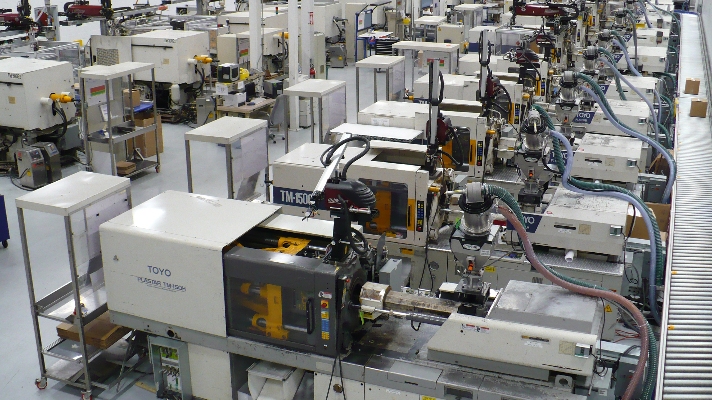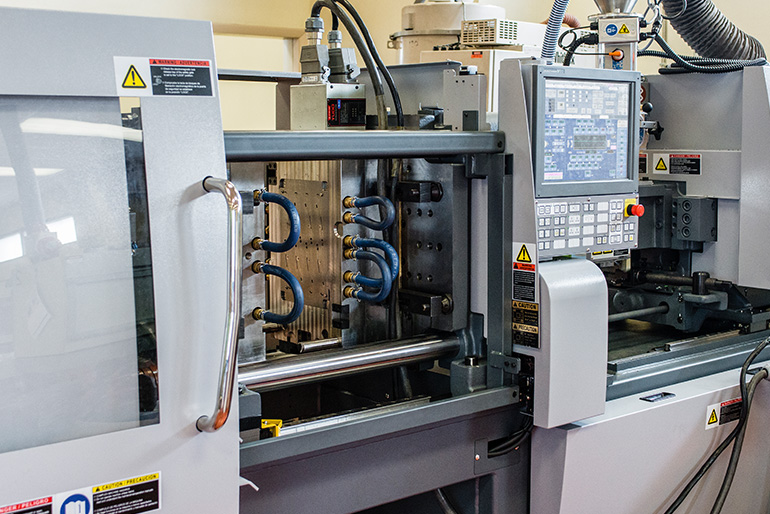How Plastic Injection Molding Ensures Uniformity and Accuracy in Production
How Plastic Injection Molding Ensures Uniformity and Accuracy in Production
Blog Article
Comprehending the Fundamentals of Plastic Injection Molding Processes
Plastic injection molding serves as a keystone of modern-day production, supplying a methodical strategy to generating complex parts with precision. Discovering these crucial elements might expose exactly how even minor adjustments can lead to significant improvements in manufacturing end results, raising concerns about the potential for innovation in this well-known procedure.
What Is Plastic Injection Molding?
Plastic shot molding is a commonly utilized manufacturing procedure that transforms thermosetting and thermoplastic products right into accurate and intricate shapes. This method is preferred for its ability to create high quantities of identical get rid of outstanding accuracy, making it an important approach in various markets, consisting of automotive, durable goods, and medical devices.
The procedure entails thawing the selected plastic product and infusing it into a mold under high pressure. The mold and mildew, made to the specifications of the preferred component, permits the molten plastic to take form as it strengthens and cools down. When the product has actually hardened, the mold is opened, and the completed part is expelled.
Plastic shot molding offers several advantages, including minimized waste, uniformity in manufacturing, and the capacity to include intricate designs that may be challenging with other manufacturing methods. Furthermore, it supports a broad range of products, each giving unique properties that can be customized for specific applications. As industries proceed to introduce, plastic shot molding continues to be at the center, making it possible for the growth of innovative items that satisfy progressing consumer demands.
The Injection Molding Refine
The shot molding process is a sophisticated technique that entails numerous crucial phases to create premium plastic components. Plastic pellets are fed into a heated barrel where they are thawed into a viscous fluid. This molten plastic is then infused under high stress into a precision-engineered mold, which forms the material into the wanted type.
Once the mold and mildew is loaded, the plastic is enabled to solidify and cool down, taking the shape of the mold dental caries. Cooling time is essential, as it affects the cycle time and the last homes of the molded component. After sufficient air conditioning, the mold opens up, and the finished part is ejected making use of ejector pins.

Products Used in Injection Molding
Various materials can be utilized in the shot molding procedure, each offering one-of-a-kind residential or commercial properties that provide to specific applications. One of the most frequently used materials consist of thermoplastics, thermosetting plastics, and elastomers.

Thermosetting plastics, like epoxy and phenolic materials, undertake a chemical adjustment during the healing procedure, resulting in an inflexible, inflexible framework. These products are suitable for applications needing high warm resistance and architectural stability, often used in electrical insulators and automobile components.
Elastomers, including silicone and rubber-based products, provide versatility and strength. Their one-of-a-kind homes make them appropriate for applications that demand flexibility, such as seals and gaskets.
Additionally, specialty materials like bio-based plastics and compounds are gaining traction for their ecological advantages and enhanced performance features, broadening the extent of injection molding applications in numerous sectors. Recognizing the buildings of these materials is important for picking the proper kind for details jobs.
Advantages of Injection Molding
Shot molding attracts attention as a highly efficient production process that uses various benefits for creating complicated get rid of precision. Among the most considerable benefits is the ability to produce detailed layouts that would certainly be difficult or challenging to attain with other methods (Plastic Injection Molding). The process enables detailed attributes and tight tolerances, making sure high-quality elements
In addition, shot molding is understood for its quick manufacturing capacities, making it an optimal choice for high-volume manufacturing. When the mold is produced, parts can be generated rapidly, decreasing preparations and raising overall productivity. This performance not only reduces manufacturing prices yet likewise supplies a competitive edge in the market.
The versatility of materials utilized in injection molding further improves its allure. A variety of thermoplastics and thermosetting polymers can be employed, permitting manufacturers to select materials that best satisfy their certain needs, including versatility, toughness, and heat resistance.
In addition, the procedure lessens waste, as excess material can commonly be recycled and reused. he said This sustainability element adds to a reduced environmental effect, making injection molding an accountable production selection. Overall, the advantages of injection molding make it a favored approach for several industries.
Factors Impacting Product High Quality
While many variables can affect item top quality in shot molding, understanding these elements is essential for accomplishing ideal results. Secret elements include material selection, processing parameters, and mold design.
Product option plays an essential duty, as various polymers show one-of-a-kind residential or commercial properties that affect flowability, strength, and thermal stability. Poor product selection can cause flaws such as warping or incomplete dental filling.
Handling specifications, including temperature level, cycle, and stress time, have to be meticulously regulated. Variants in these settings can result in incongruities in component dimensions and surface coating. As an example, excessively high temperature levels may cause destruction of the polymer, while insufficient pressure can cause short shots.
Mold and mildew style is equally vital, as it figures out the flow of the molten plastic and the cooling procedure. Inadequately developed molds may lead to irregular cooling prices, resulting in recurring tensions and dimensional errors.

Conclusion
Finally, plastic injection molding serves as a critical manufacturing procedure that makes it possible for the efficient manufacturing of high-quality parts. Proficiency of the shot molding process, including the understanding of materials and the impact of numerous aspects on item high quality, is important for achieving optimal outcomes. The benefits of this technique, such as cost-effectiveness and design adaptability, more highlight its importance across numerous markets, solidifying its standing as a favored option for high-volume production.
Plastic shot molding serves as a keystone of modern-day manufacturing, providing a systematic method to producing intricate elements with accuracy.Plastic shot molding offers numerous advantages, consisting of minimized waste, consistency in manufacturing, and i loved this the capacity to integrate elaborate layouts that may be testing with other making techniques (Plastic Injection Molding). As industries proceed to innovate, plastic injection molding continues to be at the leading edge, enabling the advancement of innovative products that fulfill evolving customer needs
The injection molding process is a sophisticated technique that includes several essential phases to generate top notch plastic components.In verdict, plastic injection molding serves as a critical manufacturing procedure that enables the effective manufacturing of premium parts.
Report this page